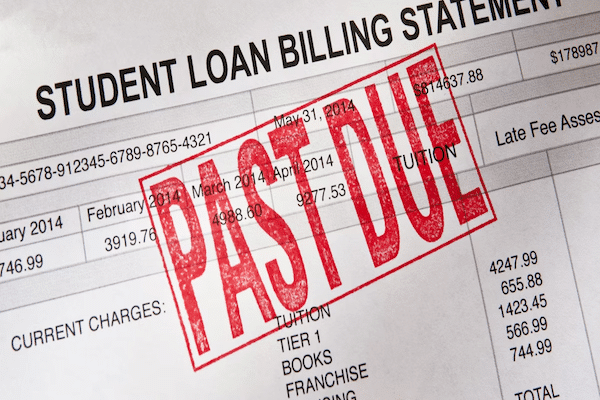The Wave of Student Loan Defaults Is Here

On a recent episode of the Level Up podcast, we sat down with Sean Lenderink, founder of Smart Loan Aid, to talk about one of the most urgent financial issues facing Americans today: the wave of student loan defaults that is already crashing down—and the tidal wave of wage garnishments that’s coming next.
Sean has been in the trenches helping borrowers navigate federal student loans for over a decade, and in our conversation, he didn’t mince words: the numbers are alarming, and the consequences are already unfolding in real time.
The Defaults Have Arrived
As Sean explained, more than 90% of borrowers aren’t currently paying on their federal student loans. Already, approximately 5 million people are in default—and that number could double in the months ahead.
Default doesn’t just mean missed payments. It means credit damage, collection calls, and ultimately, wage garnishments. Sean described this as the “big wave” that’s building – defaults are here, and wage garnishments are right around the corner.
What Wage Garnishment Really Means
Sean walked us through what happens when your wages are garnished:
- Up to 15% of your disposable income can be taken directly from your paycheck before you even see it.
- In some cases, tax refunds can also be intercepted, creating a one-two punch for families counting on that money.
- Unlike other debts, student loans can even garnish Social Security income, hitting borrowers on a fixed income especially hard.
As Sean put it, many borrowers “wake up one day and suddenly realize there’s a garnishment on their paycheck.” It’s a financial shock that leaves little room to cover rent, groceries, or childcare—and a situation that is very difficult to get out of.
The Difficulty of Getting Out of Wage Garnishments
Once you’re in garnishment, the path back to stability is steep. Sean explained that borrowers must usually enter a rehabilitation plan, making six to nine “good faith” payments before the garnishment is lifted. The kicker? During this process, the garnishment doesn’t stop—you’re paying both.
That double strain—reduced income from garnishment plus additional payments—makes it incredibly difficult for borrowers to get back on track. And everyday life doesn’t pause: rent, medical bills, and emergencies keep coming.
Bigger Than a Personal Problem
This isn’t just a personal finance crisis. As Sean pointed out, when millions of paychecks shrink overnight:
- Consumer spending drops.
- Local economies feel the pinch.
- Wealth gaps widen.
If projections hold, this could become one of the largest debt collection events in U.S. history. And it’s happening in a moment when so many households can least afford another hit.
Final Thought
The defaults aren’t coming—they’re here. And as Sean reminded us, the “big wave of garnishment” isn’t far behind. The only question is how many borrowers will be caught off guard when it hits—and how many will be able to navigate the difficult path out?
🎧 For the full conversation with Sean Lenderink of Smart Loan Aid—including why defaults are accelerating, how wage garnishment actually works, and what it takes to get out of it catch the full episode on one of our channels below.




Responses